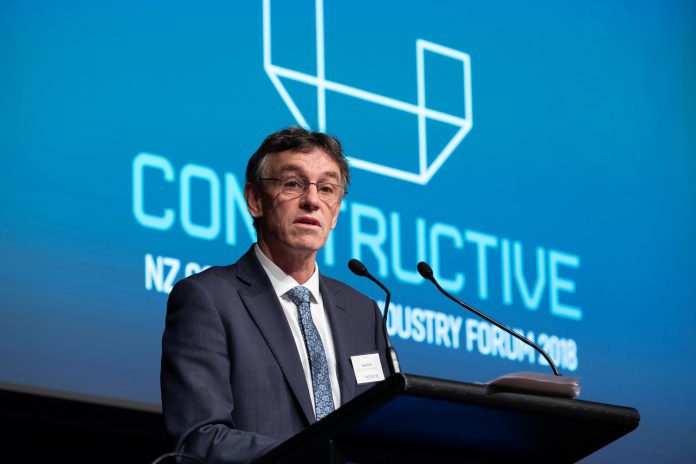By RMBA chief executive David Kelly
The timing of this year’s Constructive Forum couldn’t have been more opportune.
Construction is firmly at the top of the news agenda, and it was also heartening to hear from Minister for Housing and Urban Development Phil Twyford that it is at the top of the Government’s agenda as well.
What was so important for me was that we did not just continue to discuss the issues. We can all agree on what is going wrong — the focus for the Forum this year was on what we can do as a sector to change.
We started Constructive three years ago because of the need for greater collaboration in the sector. We were pleased to have achieved that, with so many different parts of the sector represented each year.
This year we focused on collaboration on the building site, and we heard from many sector chief executives during the day.
The first session asked how can we move from just talking about collaboration to making it happen? Southbase Construction chief executive Quinn Henderson said this meant building trust between key parties during projects, and trying to move away from seeing each other as competitors.
Building trust takes time — we need long-term thinking to understand our pipeline so we can give certainty to these relationships beyond the first project.
This was echoed by Ockham Residential chief executive Helen O’Sullivan, who said we need to consider that each project is not the only deal we will be doing with each other.
A great example was given by Auckland University property services director Peter Fehl, who felt the competitive procurement model was not working, and that we need to look at a relationship model.
Auckland University has $700 million worth of construction work underway over the next three years. This means 12 contracts are underway at any one time.
The university is not focused on working with the lowest price contractors, but the ones which will be the best long-term partner for the project. We need more of this approach.
Key focus on risk
Risk was another key focus. Leighs Construction chief executive Anthony Leighs summarised it well when he said there is too much talk about transferring risk, and not enough talk about mitigating it.
Naylor Love chief executive Rick Herd could not have said it better when he stated that construction management was risk management.
It is down to us to ensure we understand the risk we are taking on when we sign contracts — this must become mandatory for both lead and subcontractors.
We need to put a stop to the race to the bottom, where no one is actually benefiting. This means demanding we are given the time and information we need to get it right.
We launched our Lead Contractor Guidelines at the Forum (see story page 14), which will help the sector do this. We will continue to update and make them available — we urge you to use them.
To raise awareness about risk, we will also be conducting a series of workshops in the main centres and holding panel sessions with the Society of Construction Law which is made up of people from the legal profession and the industry.
There was plenty of discussion about the skills and experience shortage. BCITO chief executive Warwick Quinn spoke about what we need to do to make the industry more attractive.
We need to change perceptions — a career in the trades is just as valuable as a university degree.
Technology and innovation have not been seen as a key part of the sector, and we can all start to tell our story better.
Building Information Modelling (BIM) was a big focus as well. As Warren and Mahoney BIM technical manager Jason Howden talked through his BIM projects, I was staggered to see the number of “clashes and issues” BIM resolved on each project.
Some of these projects had up to 50 issues and clashes that were resolved before construction even began. This provides a powerful argument for more of the industry to be using BIM.
The games changers session provided some examples of the innovation happening across the industry today.
These are no longer outlier technologies. In last year’s Commercial Project Awards, more than two thirds of the properties used these kinds of new technologies.
I was particularly struck by the concept of “building it twice” — the first time will be virtually, before physically. This allows everyone to understand risks and issues to achieve a great final project.
We will continue to share the great practice that we see across the sector. I urge builders to enter projects into the Commercial Project Awards — it is a great way to share and celebrate our successes.
These awards are all about collaboration across the project teams. The winning properties are those where the project team, including the client and all of the contractors, comes together to build something great.
We will continue to keep these conversations going with the entire sector, and Government, and we look forward to updating you on our progress throughout the year.


